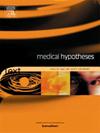The Lazarus’ sign: A novel hypothesis on its hodology and neurophysiological mechanisms
IF 2.1
4区 医学
Q3 MEDICINE, RESEARCH & EXPERIMENTAL
引用次数: 0
Abstract
The Lazarus’ sign, characterized by respiratory thoracic movements and arm flexion, is a complex and primitive motor response observed exclusively in patients with brain death in ventilator support (1). Thus, Lazarus’ sign is a rare spinal reflex, generating movement solely using propriospinal structures and only occurs under certain circumstances concomitant with brain death: apnea testing, ventilator withdrawal, arterial hypotension, nociceptive stimuli, and passive neck flexion (2). The correlations between these circumstances and Lazarus’ sign and the spinal cord structures responsible for this reflex remains unclear. This article, revising previous studies, propose a hypothesis regarding the essentials of this sign. In summary, based on cervical spinal cord microanatomy and neurophysiology, we present a detailed description regarding how the depolarization of respiratory motor neurons, originally responsible for thoracic expansion movements, promoted by hypoxia, nociceptive stimuli and proprioception also induces activation of alpha and gamma motor neurons, responsible for bilateral arm flexion, generating all patterns observed in Lazarus sign.
拉撒路的标志:一个关于其药理和神经生理机制的新假说
拉撒路征以呼吸性胸部运动和手臂屈曲为特征,是一种复杂而原始的运动反应,仅在脑死亡患者在呼吸机支持下观察到(1)。因此,拉撒路征是一种罕见的脊柱反射,仅通过本体脊柱结构产生运动,仅在脑死亡的某些情况下发生:呼吸暂停试验、呼吸机停吊、动脉低血压、伤害性刺激和被动颈部屈曲(2)。这些情况与拉撒路标志和负责这种反射的脊髓结构之间的相关性尚不清楚。本文在修正前人研究的基础上,对这一标志的本质提出假设。总之,基于颈脊髓显微解剖学和神经生理学,我们详细描述了呼吸运动神经元的去极化是如何产生的,呼吸运动神经元最初负责胸腔扩张运动,缺氧、伤害性刺激和本体感觉促进了呼吸运动神经元的去极化,也诱导了负责双侧手臂屈曲的α和γ运动神经元的激活,产生了拉撒路征中观察到的所有模式。
本文章由计算机程序翻译,如有差异,请以英文原文为准。
求助全文
约1分钟内获得全文
求助全文
来源期刊

Medical hypotheses
医学-医学:研究与实验
CiteScore
10.60
自引率
2.10%
发文量
167
审稿时长
60 days
期刊介绍:
Medical Hypotheses is a forum for ideas in medicine and related biomedical sciences. It will publish interesting and important theoretical papers that foster the diversity and debate upon which the scientific process thrives. The Aims and Scope of Medical Hypotheses are no different now from what was proposed by the founder of the journal, the late Dr David Horrobin. In his introduction to the first issue of the Journal, he asks ''what sorts of papers will be published in Medical Hypotheses? and goes on to answer ''Medical Hypotheses will publish papers which describe theories, ideas which have a great deal of observational support and some hypotheses where experimental support is yet fragmentary''. (Horrobin DF, 1975 Ideas in Biomedical Science: Reasons for the foundation of Medical Hypotheses. Medical Hypotheses Volume 1, Issue 1, January-February 1975, Pages 1-2.). Medical Hypotheses was therefore launched, and still exists today, to give novel, radical new ideas and speculations in medicine open-minded consideration, opening the field to radical hypotheses which would be rejected by most conventional journals. Papers in Medical Hypotheses take a standard scientific form in terms of style, structure and referencing. The journal therefore constitutes a bridge between cutting-edge theory and the mainstream of medical and scientific communication, which ideas must eventually enter if they are to be critiqued and tested against observations.
 求助内容:
求助内容: 应助结果提醒方式:
应助结果提醒方式:


